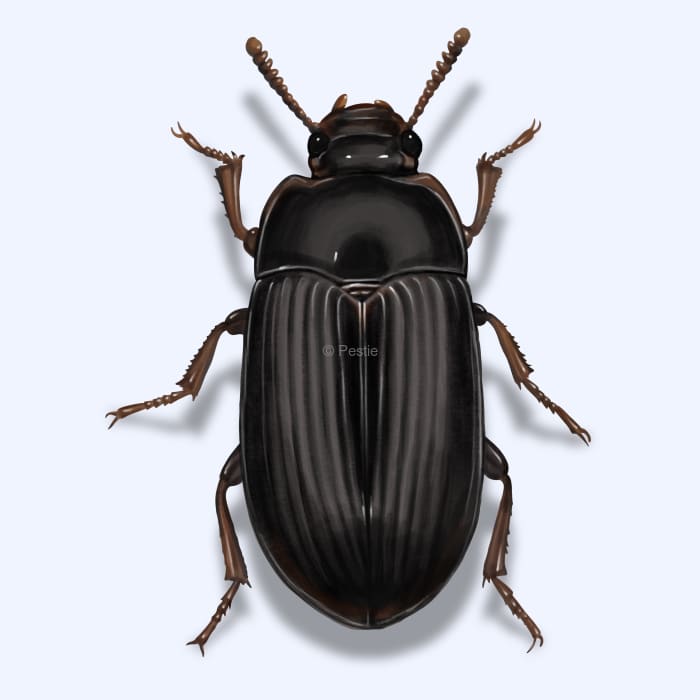How to identify and get rid of darkling beetles

Stop darkling beetles in their tracks
Was that a cockroach that scurried by? Nope, that was a darkling beetle, an overlooked household pest that most people don't expect! Darkling beetles aren't always a nuisance in homes, but if you have a messy pantry or pet food that's available, these little guys might just make themselves at home.
Darkling beetles belong to the Tenebrionid family of beetles, and their larvae are referred to as mealworms. Mealworms are often used as feed for pet reptiles or rodents. The adults look like your standard black beetle, as they don't have any striking colors or features.
Since there are over 20,000 species of darkling beetles, it can be difficult to pinpoint certain characteristics and behaviors. They live in a wide variety of habitats, ranging from deserts to forests. They usually feed on living plants or decaying plant matter. Their larvae live in rotten wood, leaf litter, poultry litter, manure, or in the soil.
Sometimes, they wander into your home, looking for shelter, food, or organic matter that has collected around your home.
How to identify darkling beetles
Darkling beetles can be identified by their dull, black, or brown bodies that are oval in shape and smooth to the touch. These beetles are flightless, which makes them more common on the ground level of homes or in gardens.
If you look closely enough, you'll notice that their antennae have 11 segments, and their eyes have a notch in them.
Signs of an infestation include the presence of these beetles in large numbers inside pantries, basements, or near pet food storage areas. Homeowners might also notice larvae, which are mealworms, in similar locations.
How big are darkling beetles?
Darkling beetles typically range from 1/2 inch to 1 1/2 inches in length.
What other pests look like darkling beetles?
Sometimes mealworms can be mistaken for darkling beetles.
Where do darkling beetles live?
They are found throughout the United States, thriving in both rural and urban settings. Look for them in dark, undisturbed areas such as basements, sheds, under rocks, and inside or around pet food storage areas.
How to get rid of darkling beetles
Darkling beetles don't usually pose a problem unless you have the right conditions for them to thrive. Consider these tips to prevent them from coming inside your home:
- Maintain cleanliness, especially in storage areas and where pet foods are kept.
- Use airtight containers to store grains and pet food to deter beetle infestations.
- Regularly clean and vacuum potential hiding and breeding spots.
- Use sticky traps to monitor and reduce their numbers.
Additionally, you can use an insect barrier spray, like Pestie's DIY solution, to repel ground beetles from coming too close to your home. Pestie offers pro-grade ingredients that are delivered straight to your door.
Treat darkling beetles with Pestie
If you're still having trouble keeping darkling beetles away, the best option is to use a pro-grade, effective pest control solution like Pestie.
Pestie is a do-it-yourself pest control solution that's specially designed to keep darkling beetles and other pests away from your home.
With Pestie, you can rest easy knowing that your living space is protected and free of creepy crawlies. And the best part? It's designed for people, pets, and the planet, so you can say goodbye to harsh chemicals and hello to peace of mind!
- Save hundreds compared to traditional annual pest plans
- People, pet, and planet-friendly
- Pro-grade customized formulas
Quick facts
- Scientific name
Family: Tenebrionidae
- Other common names
Lesser Mealworms
- Colors
Dark brown or black
- Life span
Up to 3 years
- Diet
Plant material or fungi
How dangerous are Darkling Beetles?
Low danger risk
Darkling beetles aren't dangerous to humans or pets.
One species of darkling beetle lives in the desert and has to do a handstand to drink. This beetle has grooves along its body that collect morning dew, and the grooves channel the water into its mouth.








